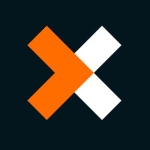We were a partner with Softomotive before they were acquired by Microsoft, and now, we are a partner with Microsoft. We have quite a bit of expertise in WinAutomation. Microsoft has depreciated it, and it's now a part of Power Automate, but we still help out clients with it even though it's deprecated.
Its use cases were the same as any other RPA product. It was basically used for automating any repetitive process, which could be anything from filings to transferring data between software to triggering different processes via email or databases and so on and so forth.
Triggering and scheduling were pretty good. There was no real commitment with WinAutomation because the licensing was very fair and you could trigger bots very easily.
They've already improved it, but I guess a testing suite would be nice to be able to test your automations in real time.
They had a second piece of software called ProcessRobot, which was kind of WinAutomation's big brother. That was a scalable solution, but all that is depreciated now.
At the time, the tech support was excellent.
Deployment was very easy. You just installed the software, and then you installed a couple of plug-ins and browsers, and you were ready to go.
The number of people required for maintenance depends on the size of the deployment. You can have one bot, you can have ten bots, or you can have a thousand bots.
It provided an extremely high return on investment. When you automate processes, you're oftentimes being able to scale very easily, and you have a very high ROI.
It had by far the fairest licensing on the market. For the money, you got a very good value.
If you're planning on implementing the product, start off with simple automations and take your time to learn, understand best practices, and understand error handling. A lot of issues come out of improper error handling and no best practices. Start simple and don't be afraid to ask questions.
There are a lot of different products out there that are competitors to this. Microsoft now has Power Automate, which is basically WinAutomation with a lot more web connectivity and a much larger ecosystem. It's extremely powerful, and you have lots of UIs, front ends, chatbots, AI, and so on and so forth. I highly recommend it, and then you have UiPath, which is geared toward enterprises. The licensing structure is much more expensive, and they have some powerful tools over there. You have Automation Anywhere, which seemed to have been a direct competitor. It was more expensive, but it was also very powerful. You have Blue Prism. You have Robocorp. There are a lot of them.
Back in the day, I would rate it a 9 out of 10. For the money, it was an excellent deal. It was very low cost compared to the competitors, and it performed 75% of what the competitors did. If your use case could fit within its capabilities, it was an excellent deal.






















